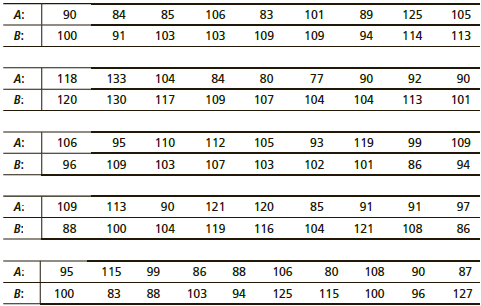In the following data pairs, A represents the cost of living index for utilities and B represents
Question:
In the following data pairs, A represents the cost of living index for utilities and B represents the cost of living index for transportation. The data are paired by metropolitan areas in the United States. A random sample of 46 metropolitan areas gave the following information

i. Let d be the random variable d = A – B. Use a calculator to verify that d < 5.739 and sd ≈ 15.910.
ii. Do the data indicate that the U.S. population mean cost of living index for utilities is less than that for transportation in these areas? Use α = 0.05.
(a) What is the level of significance? State the null and alternate hypotheses. Will you use a left-tailed, right-tailed, or two-tailed test?
(b) Check Requirements What sampling distribution will you use? What assumptions are you making? Compute the value of the sample test statistic and corresponding t value.
(c) Find (or estimate) the P-value. Sketch the sampling distribution and show the area corresponding to the P-value.
(d) Based on your answers in parts (a) to (c), will you reject or fail to reject the null hypothesis? Are the data statistically significant at level a?
(e) Interpret your conclusion in the context of the application.
DistributionThe word "distribution" has several meanings in the financial world, most of them pertaining to the payment of assets from a fund, account, or individual security to an investor or beneficiary. Retirement account distributions are among the most...
Step by Step Answer:

Understandable Statistics Concepts And Methods
ISBN: 9781337119917
12th Edition
Authors: Charles Henry Brase, Corrinne Pellillo Brase





